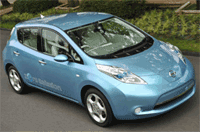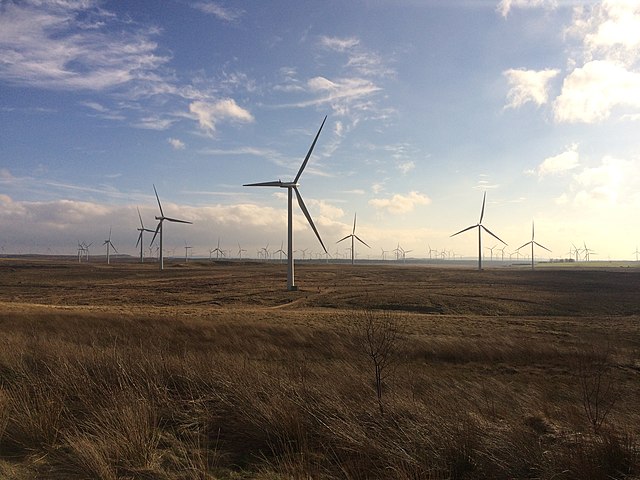Economic and emissions impacts of electric vehicles
President Obama during his 2011 State of the Union address stated that we should have one million electric vehicles (EV) in the United States by 2015. The benefits of that would be to to reduce our dependence on foreign oil and to reduce emissions. These are worthy goals. This article will take look at the economic impact of using electric cars, their emissions, and their impact on the electric grid.

Nissan Leaf
As an example of a currently available electric car, I have chosen the Nissan Leaf since it is all electric.
The car has the following pertinent specifications:
• Price $32 780
• 100 miles per electric charge
• 24 kWh lithium-ion battery
Operating economics
The Leaf might be used primarily as a second car for commuting on a daily round trip of say, 50 miles, requiring a daily charge of 12 kWh. A typical home currently uses 25 kWh each day, so this represent about a 50-percent increase in the electricity use. The cost of that electricity varies, depending on where you live, but if we use an average residential rate of 11.3 ¢/kWh, we get a daily cost of $1.35, or a monthly cost of about $40.
This cost needs to be compared with the cost savings of not using the required gasoline. If we assume that a typical equivalent gasoline-powered car would get 25 miles per gallon; and if we assume $3 per gallon, we get the monthly cost of $180 (50 miles/day x 30 days/month x $3 per g/25 miles/g).
For a complete examination of the economics, we would have to consider the incremental cost of the batteries. The added expense would have to be properly amortized over their effective lifetime. Both the cost and the lifetime are presently difficult to determine because the cost of batteries is not listed in the specification and because experience on the lifetime is limited. A very rough estimate might be that the batteries cost $10 000 and last for five years. This implies that the amortization cost of $166/month, neglecting any interest charge ($10 000/60 months)
Also to be considered is the cost of maintenance, which may be less expensive for an electric vehicle because of fewer moving parts. So the cost of electric vehicle ownership may be about the same as owning a gasoline-powered car.
Impact on the grid
 The next question that needs to be asked is whether the power to charge the batteries of the one million electric cars is available on the grid. The answer to this question is a definite yes, since the charging would be done at night when the electricity demand is low. As a matter of fact, there is power available to charge many millions more.
The next question that needs to be asked is whether the power to charge the batteries of the one million electric cars is available on the grid. The answer to this question is a definite yes, since the charging would be done at night when the electricity demand is low. As a matter of fact, there is power available to charge many millions more.
According to the U.S. Bureau of Transit Statistics, for 2006 there were 250,844,644 registered passenger vehicles in the United States, with 135,399,945 of them classified as automobiles (excluding SUVs and pick-up trucks). In the future, one might expect that half (68 million) of those cars could be electric and used for commuting, in which case the extra power requirement during the night to charge them for six hours would be 136 000 MW (12kWh x 68 x 106/6 hr).
In 2009, the U.S. electrical grid generated 400 000 MW of electricity. Depending on the nighttime power requirement to meet other loads on the grid, the current grid could accommodate much of that extra load. For example, if a typical nighttime load reduction is 20 percent without charging EVs, then one could accommodate the charging of 40 million EVs without reducing power (68 million x 400 x 0.2/136).
If smart chargers are used that would allow timing control by grid operators, the load on the grid could be flattened, thus making maximum use of the baseload generators, which have the lowest cost.
Emissions impact
Finally, the question of whether the use of electric cars leads to reduced emissions needs to be addressed.
 The use of electric cars in metropolitan areas would definitely reduce emissions locally, which is beneficial because that is where people live and work. The emissions are transferred to whatever emissions are created at the power plant location (which may be a distance away from the metropolitan area). Transferring the emissions to power plants would eliminate the unhealthy emissions of hydrocarbons, nitrogen oxides, and carbon monoxides from automobiles. The EPA states that "the personal automobile is the single greatest polluter, as emissions from millions of vehicles on the road add up".
The use of electric cars in metropolitan areas would definitely reduce emissions locally, which is beneficial because that is where people live and work. The emissions are transferred to whatever emissions are created at the power plant location (which may be a distance away from the metropolitan area). Transferring the emissions to power plants would eliminate the unhealthy emissions of hydrocarbons, nitrogen oxides, and carbon monoxides from automobiles. The EPA states that "the personal automobile is the single greatest polluter, as emissions from millions of vehicles on the road add up".
If electric cars are to be charged at night when they are not used, the emissions are created by the mix of power plants connected to the grid at that time (coal, natural gas, nuclear, hydro, solar, wind, etc.) Only nuclear, hydro, solar, and wind are emission free.

Solar photovoltaic array
Solar photovoltaic can make no contribution to charging electric cars, unless extra batteries are used for charging during the day. This may require several $10 000 batteries and many times that cost for the solar power system. That is a very high cost for the benefit of generating $1.35 worth of electricity each day.
Similarly, wind cannot be relied on to charge electric cars because it is intermittent. One could contemplate having several spare electric cars in one's driveway waiting to be charged, with only one of them being available on any one day. The expense of that would be prohibitive.
For grids with ample hydro such as the Bonneville Power Administration, the charging of electric cars can easily be accommodated. The hydro power is reduced significantly at night, which is just when the power is needed to charge the electric cars. This is a very good fit. It is also very inexpensive since the extra water that would otherwise be wasted would be used to produce the extra power at night.
For grids with less hydro, it is likely that the maximum hydro power is used continuously, as it is a low-cost generator. For that situation, the peaking generators are likely to be fossil generators that need to operate longer during the night. Thus, the emission impact of charging EVs at night is the difference between the extra emission at the power plant (likely to be natural gas) and the emission from gasoline-powered cars. There is likely to be a net carbon emission benefit, but not a complete elimination of carbon emissions.

Brunswick Nuclear Energy Facility
Thus electric vehicle can have a significant impact on the reduction of unhealthy automobile emissions, but in order to decrease the emissions from the production of electricity in general, nuclear power plants are the only emission-free power generators that can have a significant impact. Currently, they produce 20 percent of the electricity in the United States, with coal's share being 50 percent. That ratio needs to change in favor of nuclear plants by building more of them.

Decher
Ulrich Decher holds a PhD in nuclear engineering. He is a member of the ANS Public Information Committee and a contributor to the ANS Nuclear Cafe.



